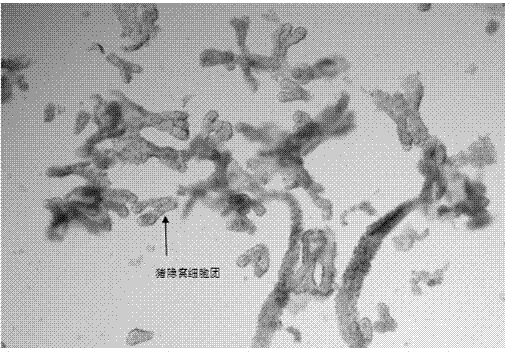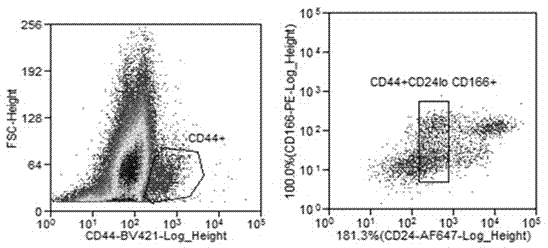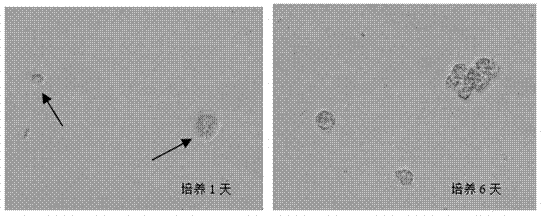Separation culture method for pig intestinal stem cells
A separation method, technology of porcine intestinal tract, applied in the field of cell separation, can solve the problem of lack of effective antibody porcine intestinal stem cell culture system
- Summary
- Abstract
- Description
- Claims
- Application Information
AI Technical Summary
Problems solved by technology
Method used
Image
Examples
Embodiment 1
[0031] Example 1 Isolation of porcine intestinal stem cells
[0032] (1) Take 15-30 cm of fresh piglet jejunum, rinse the contents with HBSS, cut the intestines into 1-2 cm segments, and wash them with a separation solution (30.0 mM Na 2 EDTA-2H 2 O; 5.6mM Glucose; 5.3mM KCl; 0.45mM KH 2 PO 4 ; 4.2 mM NaHCO 3 ; 138mM NaCl; 0.34mM NaCl 2 HPO 4 ) and incubate for 30 min, remove the separation solution, resuspend these jejunum fragments with HBSS, and shake them upside down for 5-10 min to obtain porcine intestinal crypt clusters, and observe the crypt clusters under a microscope as follows: figure 1 .
[0033] (2) Add an appropriate amount of digestion solution to the obtained crypt mass, digest into single cells at 37°C, filter through a 30 μm cell sieve after termination of digestion, collect the filtrate (single cells), and resuspend these single cells with Advance DMEM-F12 , so that its concentration reaches 10 6 cells / mL.
[0034](3) First use 10% fetal bovine s...
Embodiment 2
[0036] Example 2 Two-dimensional culture of porcine intestinal stem cells
[0037] Suspend the CD44 obtained in Example 1 with complete medium containing serum and cytokines (Wnt3a, R-spondin1, Y-27632, Noggin, EGF, LY2157299 and SB202190) + CD24 lo CD166 + Cells were seeded in 96-well plates and placed in CO 2 Cultured in an incubator at a temperature of 37°C with 5% CO in the incubator 2 of humid air. By culturing, CD44 + CD24 lo CD166 + The growth of cells under two-dimensional culture conditions, the experimental results are as follows: Figure 4 .
[0038] The results showed that porcine intestinal stem cells could not form gut-like structures under two-dimensional conditions.
Embodiment 3
[0039] Example 3 Three-dimensional culture of porcine intestinal stem cells
[0040] Using CD44 containing serum, cytokines (Wnt3a, R-spondin1, Y-27632, Noggin, EGF, LY2157299 and SB202190) and Example 1 + CD24 lo CD166 + The basic mixture of cells was uniformly mixed with Matrigel, seeded into a 48-well plate, and after the mixture was solidified, a complete medium (the components of the complete medium were the same as those in Examples 1 and 2) was added to cover it. By culturing, CD44 + CD24 lo CD166 + The growth of cells under three-dimensional culture conditions, the experimental results are as follows: Figure 5 .
PUM
 Login to View More
Login to View More Abstract
Description
Claims
Application Information
 Login to View More
Login to View More - R&D
- Intellectual Property
- Life Sciences
- Materials
- Tech Scout
- Unparalleled Data Quality
- Higher Quality Content
- 60% Fewer Hallucinations
Browse by: Latest US Patents, China's latest patents, Technical Efficacy Thesaurus, Application Domain, Technology Topic, Popular Technical Reports.
© 2025 PatSnap. All rights reserved.Legal|Privacy policy|Modern Slavery Act Transparency Statement|Sitemap|About US| Contact US: help@patsnap.com



